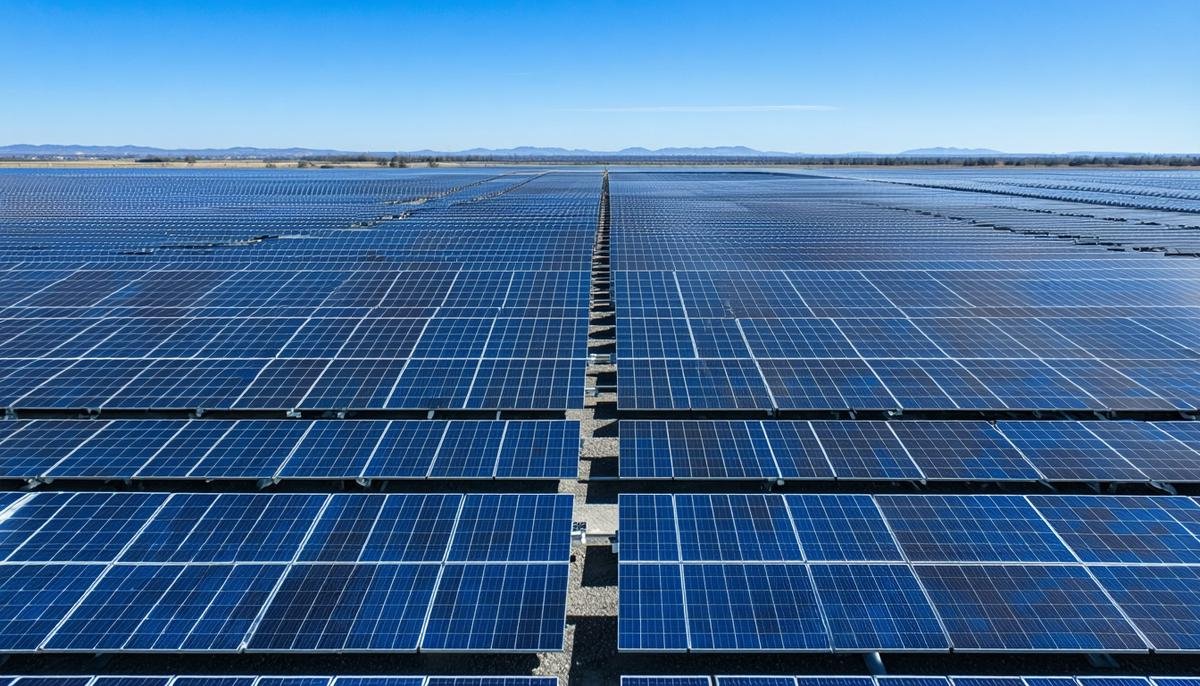AI's Role in Energy Efficiency
AI's integration into energy management is improving efficiency in buildings and industries. It predicts usage patterns and optimizes consumption, leading to savings and reduced environmental impact. In industries, AI identifies areas of waste and offers solutions.
Office buildings using AI to monitor energy demands can anticipate requirements throughout the day, adjusting output as needed. This reduces excess use and costs. The technology can also modify heating and cooling systems based on occupancy and weather forecasts.
AI learns from historical data. Factories can employ AI systems to foresee energy peaks during production schedules. By anticipating these times, facilities can shift energy-intensive tasks to off-peak hours or prepare additional sources to maintain smooth operation.
For businesses, AI applications range from thermostat adjustments to managing complex systems like electrical grids. Smart grids with AI can adapt to changes in supply and demand, ensuring steady service while minimizing waste.
Companies using AI analyze data from IoT devices and sensors to map out energy use and highlight inefficient areas. This approach enables businesses to pinpoint necessary adjustments, whether using more efficient machines or changing employee habits.
AI is connecting current consumption to more efficient practices, suggesting a future of smart energy use and resource conservation.

AI in Renewable Energy Development
AI is increasingly important in renewable energy, particularly in enhancing wind and solar power. It plays a key role in predicting energy output and improving maintenance protocols.
AI systems process datasets from meteorological sources, sensor arrays, and predictive models to determine efficient deployment of renewable resources. This allows providers to anticipate generation patterns and schedule energy production during peak resource availability.
AI can process weather forecasts and historical climate data to predict optimal wind speeds or sunlight intensity. This insight allows for wind turbine alignment adjustments or solar panel tilting to maximize energy capture.
AI also improves maintenance of renewable energy systems. AI systems monitor equipment like turbines or photovoltaic cells, identifying early signs of wear or failure. By analyzing operational data patterns, AI can project when maintenance is necessary, avoiding unexpected breakdowns.
AI's potential in advancing renewable energy extends to design improvements. By examining long-term operational data, AI systems provide performance insights that guide the development of more efficient technologies.
As AI evolves, its synergy with renewable energy will bolster sustainability initiatives and streamline the optimization of natural resources.

AI's Impact on Waste and Water Management
AI is essential for optimizing waste and water management systems. Its capabilities in data analysis, pattern recognition, and predictive modeling are crucial in addressing these environmental challenges.
In waste management, AI helps identify production patterns across sectors. This understanding helps design more efficient collection schedules and routes, reducing fuel consumption and carbon emissions. AI-powered systems can adjust collection routes based on real-time data, ensuring resources are allocated effectively.
AI enhances sorting and recycling processes by analyzing waste stream composition. Machine learning algorithms improve recyclable material separation from waste. Advanced applications include robotic systems using visual recognition technologies to sort items on conveyor belts, increasing recycling operation efficiency.
In water resource management, AI models analyze datasets on water quality, consumption, and distribution. AI systems monitor real-time data from sensors across water networks to detect leaks or irregularities, resulting in water savings and waste prevention.
AI predicts water demand patterns, allowing informed decisions about storage and distribution. In agriculture, AI offers insights into irrigation management by integrating data on soil moisture levels, weather forecasts, and crop requirements.
The technology also safeguards water quality by monitoring pollutants and contaminants within water supplies, providing early warnings for potential safety issues.
As AI technology advances, its role in creating more efficient waste and water management systems will expand, aligning with global sustainability efforts.

Risks of AI in Sustainability
While AI offers potential for advancing sustainability goals, several challenges accompany its adoption. A major concern is the energy consumption of AI systems, particularly during large machine learning model training. Addressing this impact requires a shift to renewable energy sources for AI data centers and developing more energy-efficient algorithms.
The rapid evolution of AI hardware raises issues related to electronic waste. Addressing this requires designing AI hardware prioritizing longevity, repairability, and recyclability.
AI systems risk perpetuating bias if trained on biased data, potentially reinforcing existing inequalities. To counter this, AI developers must prioritize diversity and fairness in model training.
Privacy concerns are another risk associated with AI's reliance on personal data. Protection against such risks involves implementing strong security measures and adhering to privacy-focused design principles.
Job displacement is also a concern, as AI technology could replace human labor. Balancing this with initiatives supporting workforce transition and reskilling is important.
Over-reliance on AI technologies might raise concerns about diminishing human interaction. Encouraging AI integration that supports community building can help mitigate these potential downsides.
Prioritizing sustainability, equity, and privacy in AI design and deployment can harmonize technological advancements with broader goals of environmental preservation and social well-being.

AI and the Sustainable Development Goals
Artificial Intelligence can accelerate progress on the Sustainable Development Goals (SDGs) established by the United Nations.
- In healthcare, AI supports ensuring health and well-being for all by improving diagnostic processes and assisting in managing health systems efficiently.
- Education benefits from AI-driven solutions through personalized learning platforms that adjust to individual student needs.
- For sustainable cities, AI is crucial in smart city development, optimizing traffic management and reducing urban energy consumption.
- AI impacts industry, innovation, and infrastructure by streamlining supply chain operations and pioneering manufacturing efficiencies.
- Environmental sustainability is strengthened through AI's capabilities in optimizing resource usage across agriculture, water, and energy sectors.
Integrating AI with the SDGs requires a balanced approach centered on ethical practices and equitable outcomes. Ensuring fair access to AI technologies is critical, especially for marginalized communities.
Collaboration among governments, businesses, and civil society is essential to effectively direct AI development. By investing in frameworks that encourage responsible AI use, we can ensure technological advancements serve the global community.
AI offers tools to enhance efficiency and spark innovation across sectors. By aligning technological advancements with environmental preservation and social well-being goals, AI serves as an enabler of global change.
- United Nations. Sustainable Development Goals. 2015.
- Khosla R. AGI Greenpac Limited: Integrating Sustainability into Core Business Practices. Interview. 2023.
- Apax Global Impact Fund. Investment in Integrated Environmental Solutions. Press Release. 2024.




